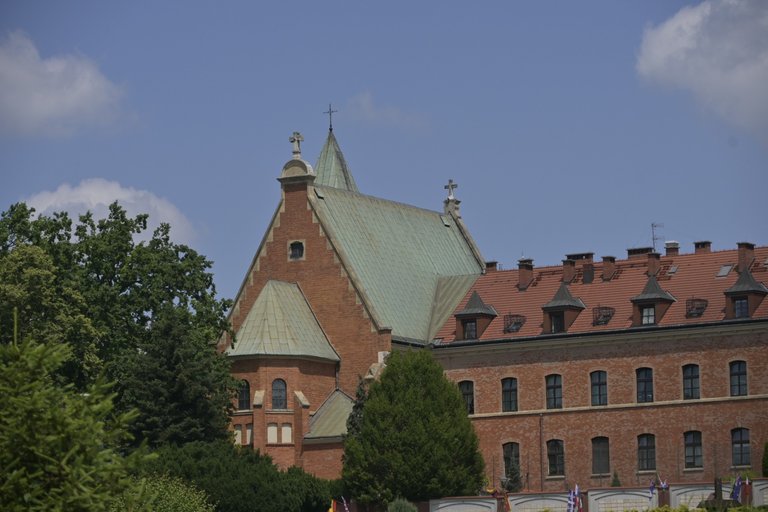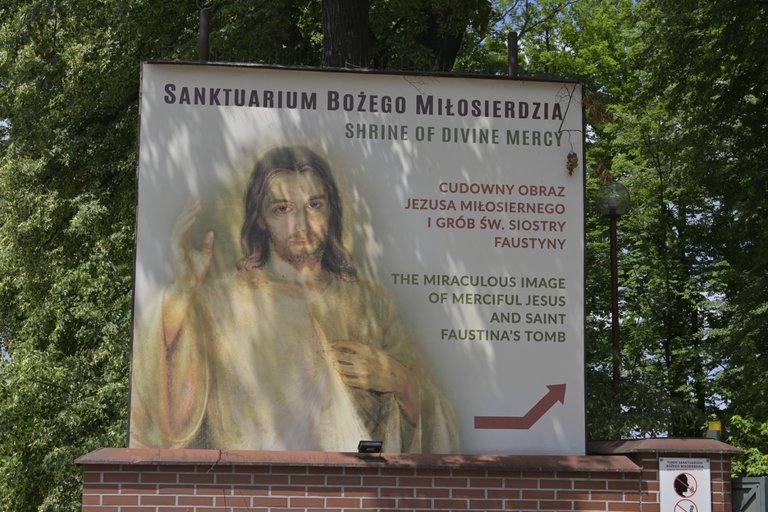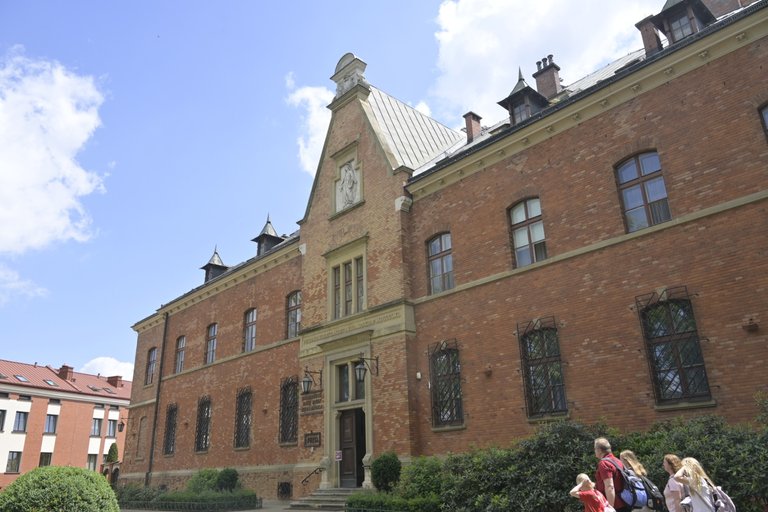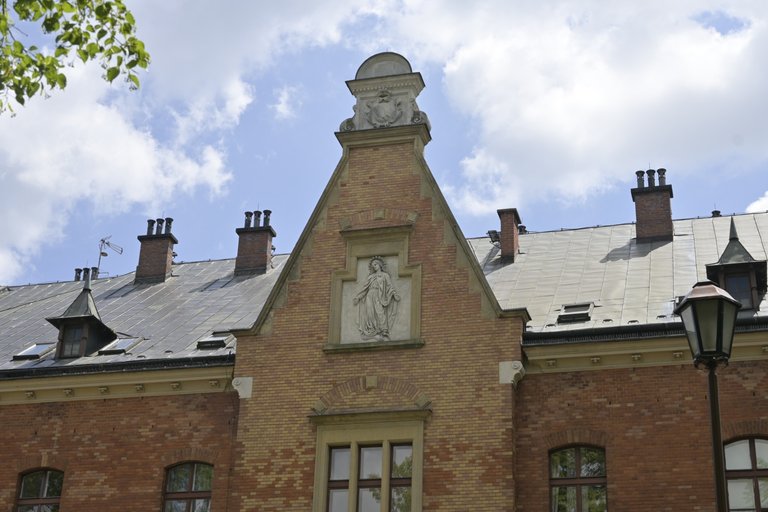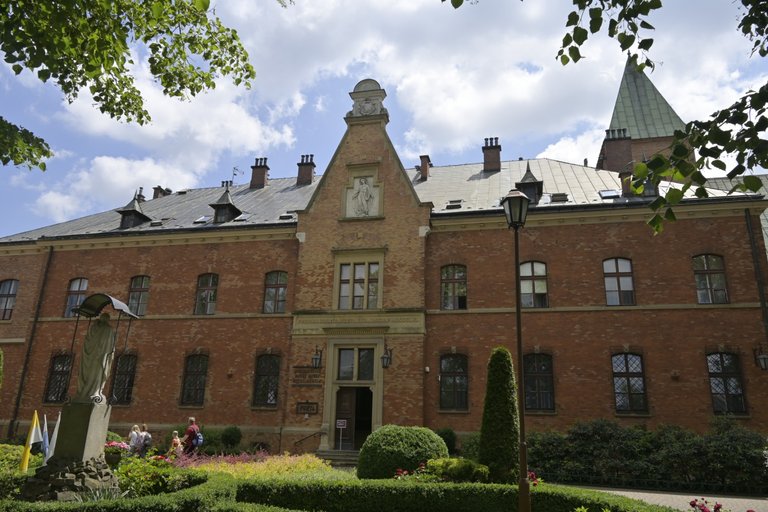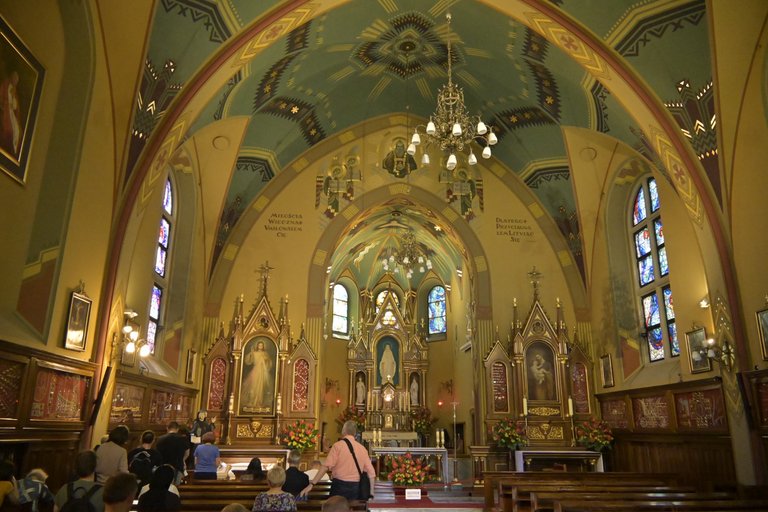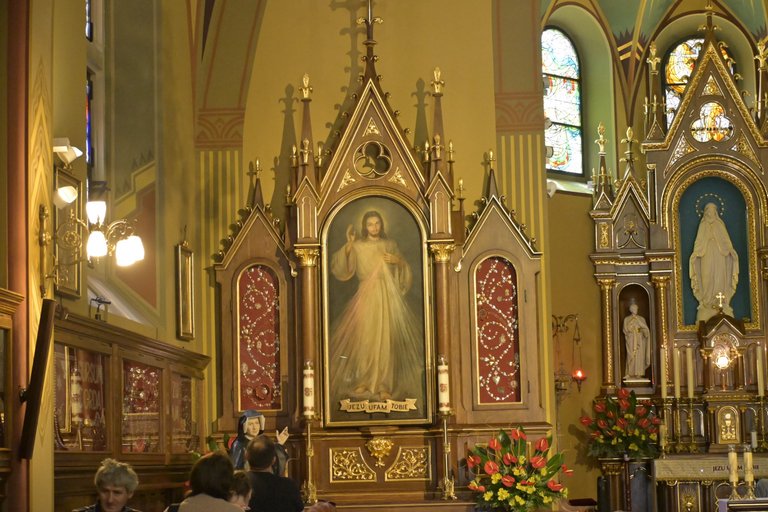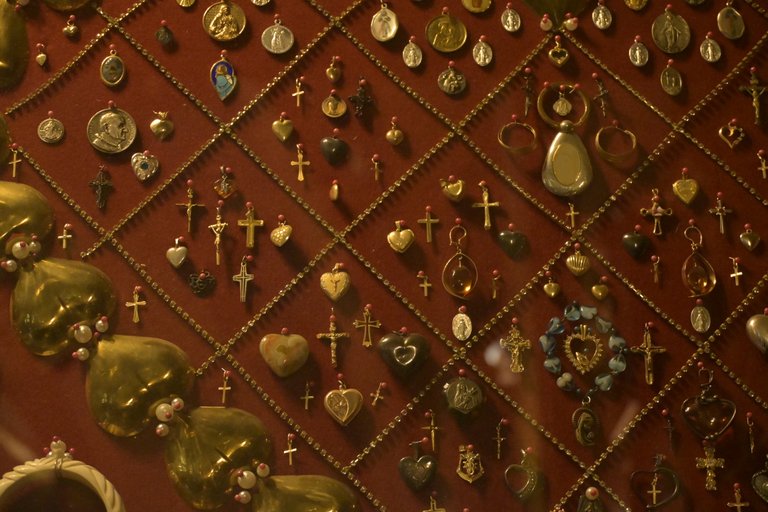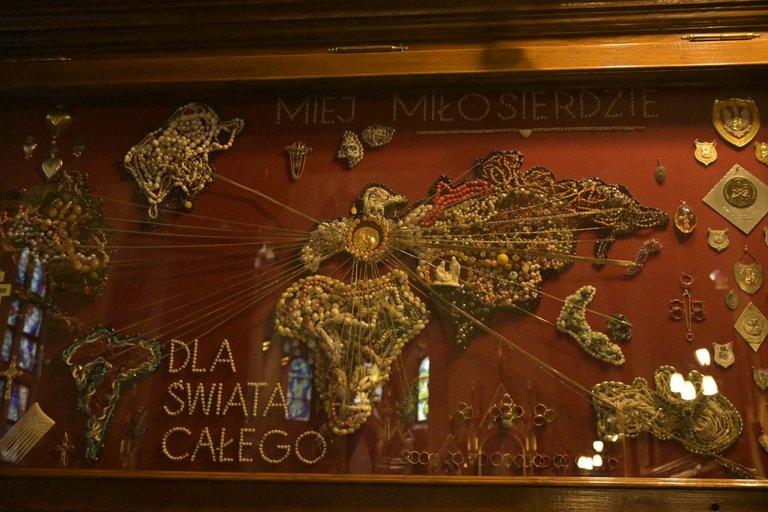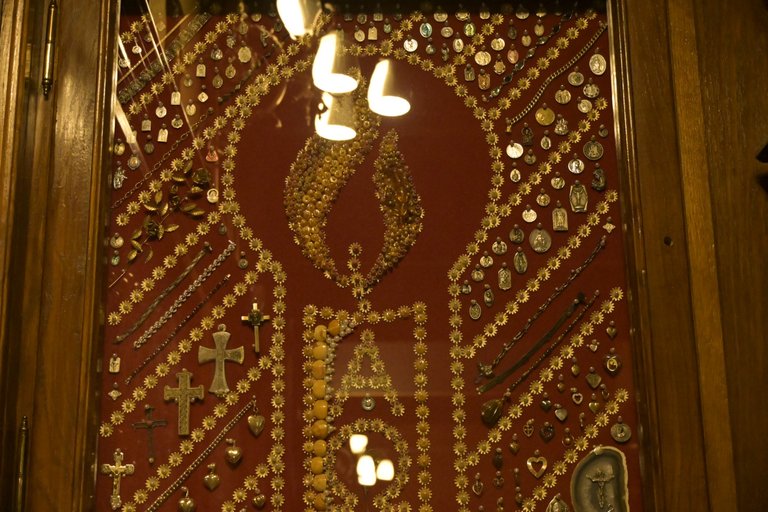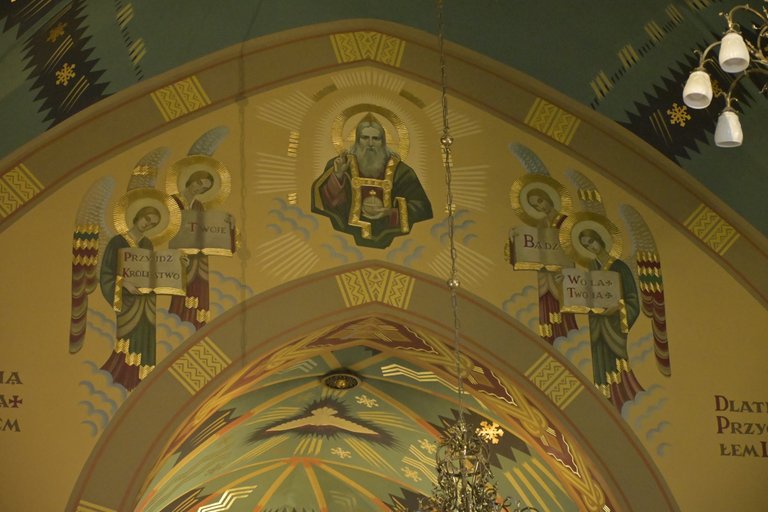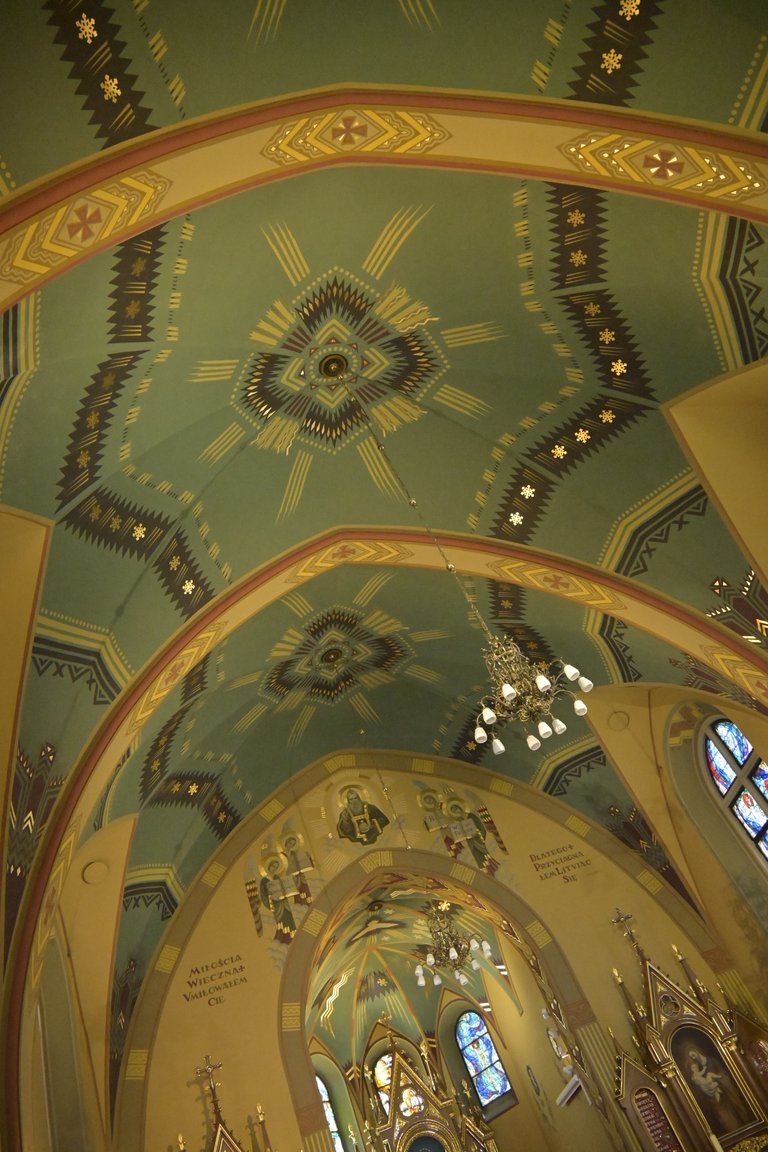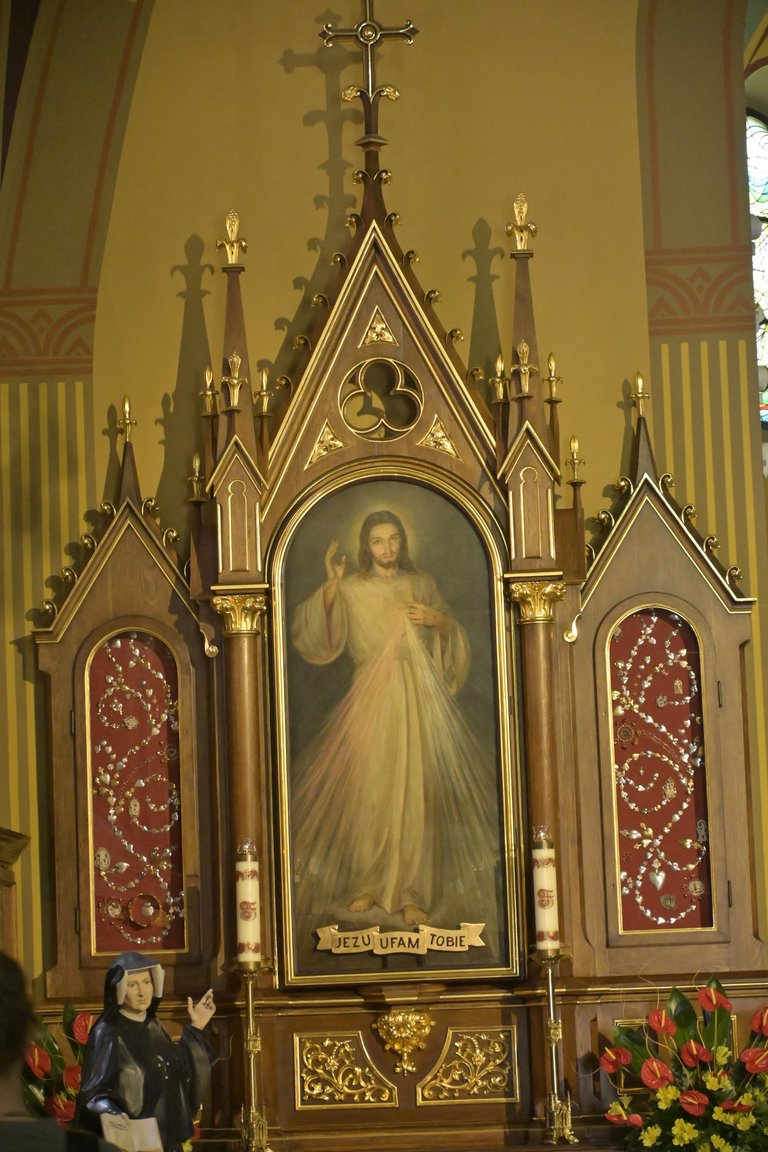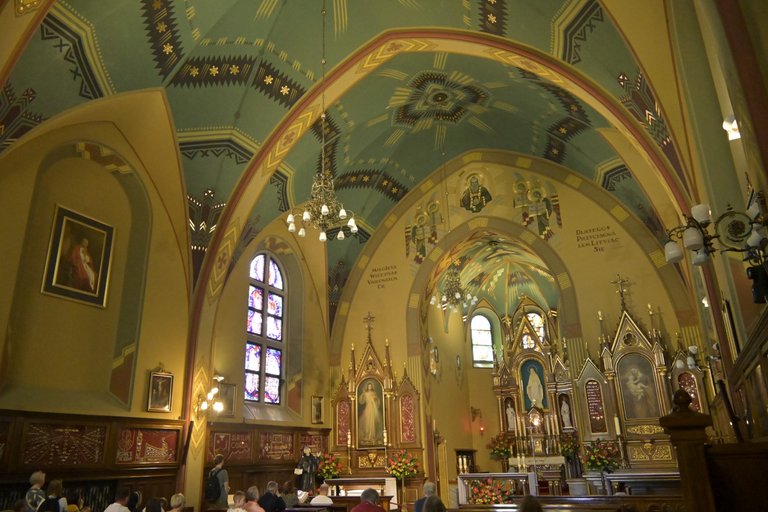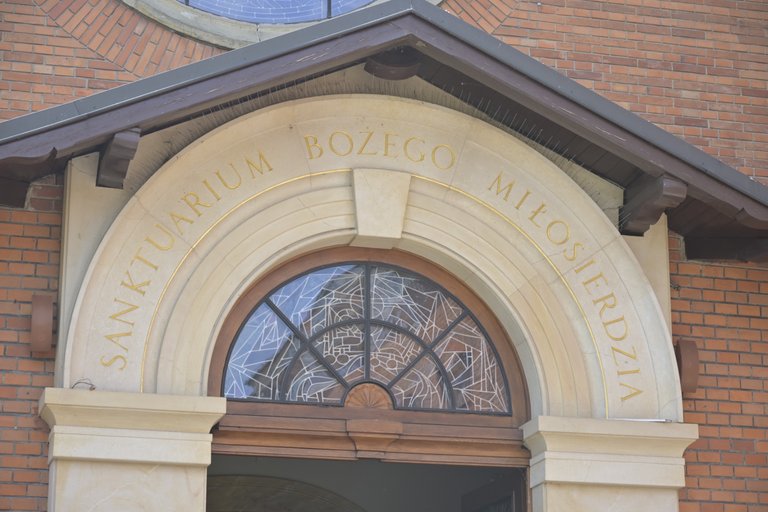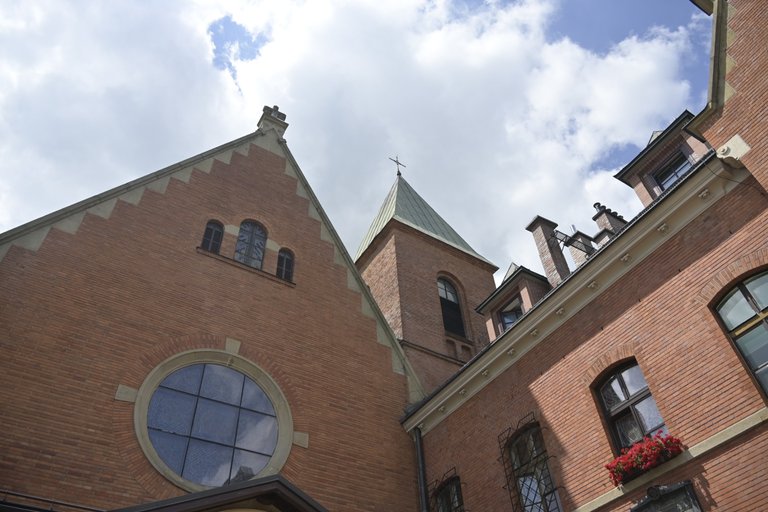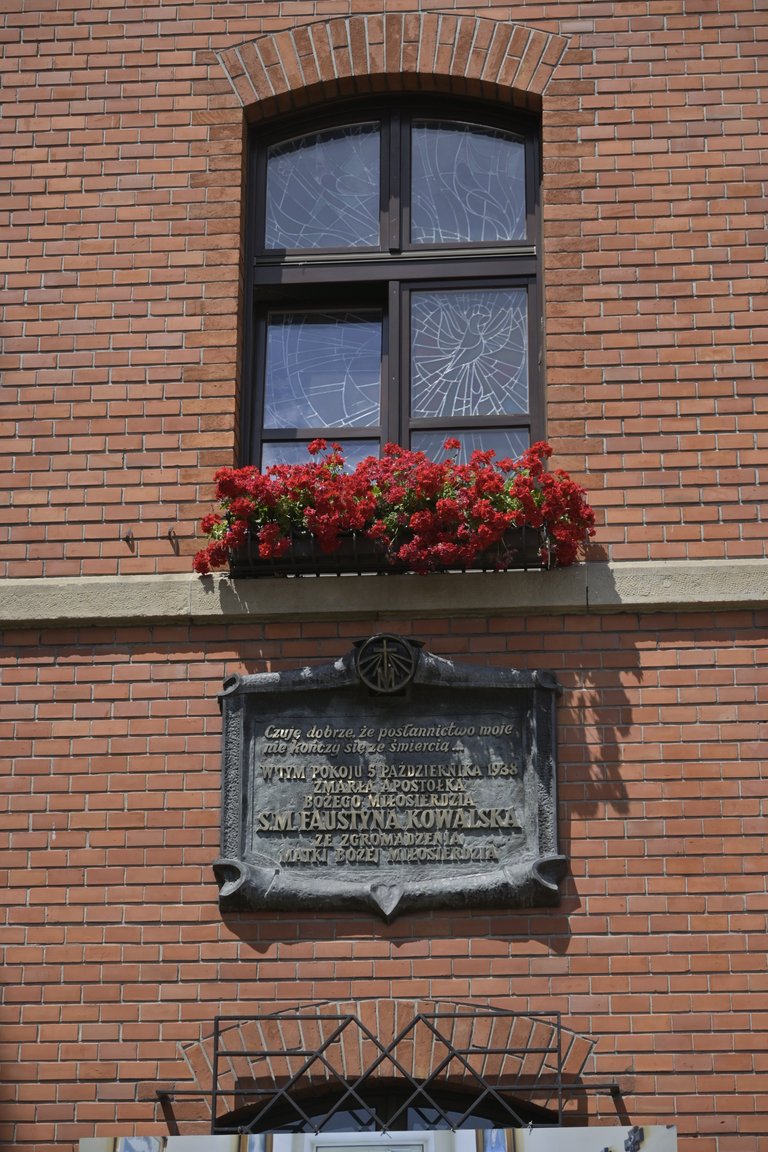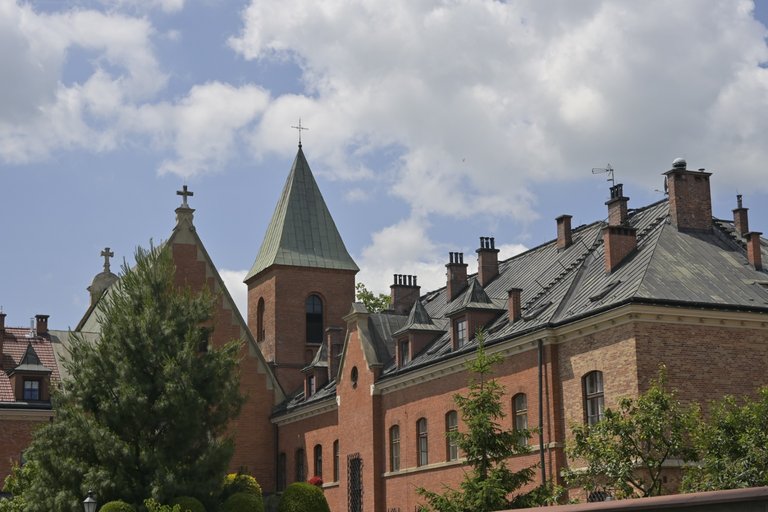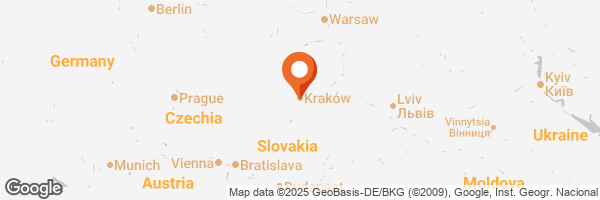[ENG]
The previous entry on the churches I visited in Krakow was devoted to the Sanctuary of Divine Mercy in Łagiewniki. However, before this modern, monumental basilica was built, to which numerous pilgrims from all over the world head every day, there was a building here, somewhat on the outskirts of Krakow, with a completely different character - older, more modest, but with the true beauty of 19th-century architecture and history. I am talking about the Chapel of St. Joseph, located on Siostry Faustyny Street, which is part of the monastery complex of the Congregation of the Sisters of Our Lady of Mercy. The buildings were built in the years 1889-1893 as a spiritual and educational base for the institution for girls run by the congregation, which was supposed to not only help, but also educate. The investment was made from the foundation of Prince Aleksander Lubomirski, a famous philanthropist and industrialist. It was he who provided the funds for the construction of the complex, in which the Chapel of St. Joseph, which was also the first church in this area, occupies an important place. The architectural design was the work of Karol Zaremba – a valued Krakow architect, known for many other sacral and public utility projects in the neo-Gothic and neo-Romanesque styles. And it must be admitted that despite its small size, the St. Joseph's Chapel has a unique atmosphere and class. From the very beginning, the St. Joseph's Chapel was intended to serve as a place of prayer for both the nuns and their pupils. It was not a representative building. It is maintained in the neo-Gothic style, with characteristic details: soaring windows with pointed arches, a modest turret for a bell tower and a brick elevation that beautifully blends in with the greenery of the garden and the neighboring monastery buildings. There are no gilded domes or the grandeur of a modern basilica – but instead you can feel the spirit of 19th-century Krakow and the silence that is often missing in modern sanctuaries. Inside, the chapel captivates with its intimate atmosphere – natural light seeps through the stained glass windows, and the simple, wooden décor allows you to focus on what is most important. In the center, there is an altar with the image of St. Joseph – the patron saint of the place, families, working people and… quiet care. Contrary to appearances, the chapel of St. Joseph is not just an “addition” to the Sanctuary of Divine Mercy. This is where the history of Łagiewniki as a spiritual center begins. If the “Józefów” had not been established here, there would have been no place for the Congregation, there would have been no St. Faustina, there would not even have been the image of Merciful Jesus, which is known to Catholics all over the world today.
Address:
ul. Siostry Faustyny 3
30-608 Kraków
Website:
https://www.misericordia.eu/
Masses on Sundays and celebrations:
7.00, 8.30, 12.00, 19.00,
[PL]
Poprzedni wpis o odwiedzonych krakowskich kościołach poświęciłem Sanktuarium Bożego Miłosierdzia w Łagiewnikach. Nim jednak powstała ta nowoczesna monumentalna bazylika, do której każdego dnia kierują się liczne pielgrzymki z całego świata istniał tutaj nieco na uboczu Krakowa Budynek o zupełnie innym charakterze – starszy, skromniejszy, ale mający w sobie prawdziwe piękno XIX-wiecznej architektury i historii. Mowa o Kaplicy św. Józefa, znajdującej się przy ulicy Siostry Faustyny będąca częścią kompleksu klasztoru Zgromadzenia Sióstr Matki Bożej Miłosierdzia. Budynki powstały w latach 1889–1893 jako zaplecze duchowe i wychowawcze dla prowadzonego przez zgromadzenie zakładu dla dziewcząt, który miał nie tylko pomagać, ale i wychowywać.
Inwestycja powstała z fundacji księcia Aleksandra Lubomirskiego, znanego filantropa i przemysłowca. To właśnie on wyłożył środki na budowę kompleksu, w którym ważne miejsce zajmuje kaplica św. Józefa, będąca zarazem pierwszym kościołem tego terenu. Za projekt architektoniczny odpowiadał Karol Zaremba – ceniony architekt krakowski, znany z wielu innych realizacji sakralnych i użyteczności publicznej w stylu neogotyckim i neoromańskim. I trzeba przyznać, że mimo niewielkich rozmiarów, kaplica św. Józefa ma wyjątkowy klimat i klasę. Kaplica św. Józefa od samego początku miała spełniać rolę miejsca modlitwy zarówno dla sióstr zakonnych, jak i dla wychowanek. Nie była to budowla reprezentacyjna. Utrzymana jest w stylu neogotyckim, z charakterystycznymi detalami: strzelistymi oknami z ostrołukowymi łukami, skromną wieżyczką na sygnaturkę i ceglaną elewacją, która pięknie komponuje się z zielenią ogrodu i sąsiednich budynków klasztornych. Nie ma tu żadnych złoconych kopuł ani rozmachu nowoczesnej bazyliki – ale za to czuć ducha XIX-wiecznego Krakowa i ciszę, której często brakuje we współczesnych sanktuariach. Wewnątrz kaplica urzeka kameralną atmosferą – oświetlenie naturalne sączy się przez witrażowe okna, a prosty, drewniany wystrój pozwala skupić się na tym, co najważniejsze. W centrum znajduje się ołtarz z wizerunkiem św. Józefa – patrona miejsca, rodzin, ludzi pracy i… cichej opieki. Wbrew pozorom, kaplica św. Józefa nie jest tylko „dodatkiem” do Sanktuarium Miłosierdzia Bożego. To właśnie tutaj zaczyna się historia Łagiewnik jako ośrodka duchowego. Gdyby nie powstał tu „Józefów”, nie byłoby miejsca dla Zgromadzenia, nie byłoby św. Faustyny, nie byłoby nawet samego obrazu Jezusa Miłosiernego, który dziś znają katolicy na całym świecie.
Adres:
ul. Siostry Faustyny 3
30-608 Kraków
Strona internetowa parafii:
https://www.misericordia.eu/
Msze Święte w niedziele i święta
7.00, 8.30, 12.00, 19.00,
